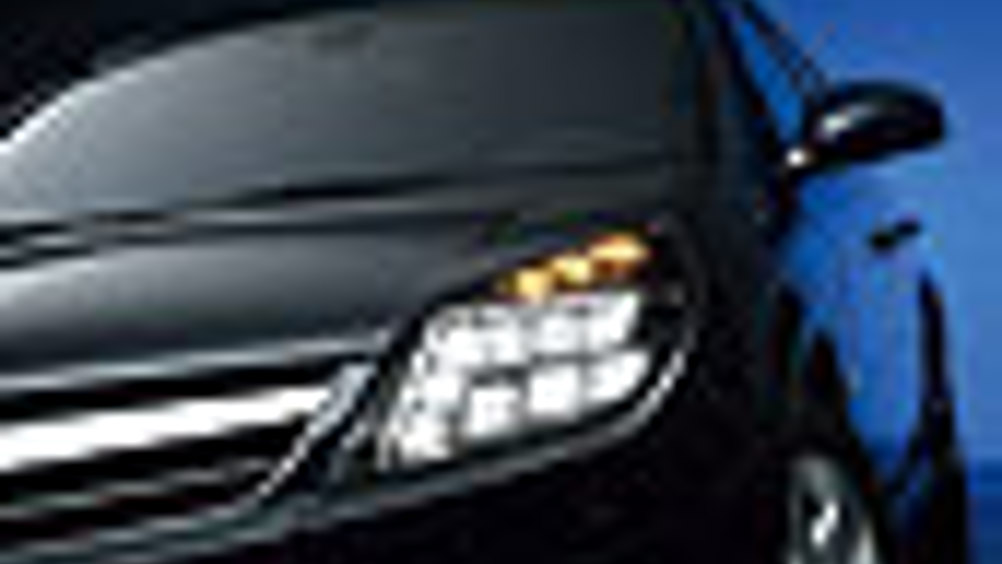Automotive lighting specialist Hella is teaming up with leading European car manufacturers to bring its intelligent headlight system into full series production within the next few years.
The system, known as adaptive cut-off line, uses a digital camera and an advanced lighting system to automatically adjust the range of the headlights to minimise glare.
According to Hella, the adaptive cut-off line system means the low beam setting does not stop at around 65m — as is now the case — but can be increased to a few hundred metres. The infrared camera, mounted above the windscreen, scans the road ahead for any signals from oncoming or preceding vehicles and picks up any bright patches of light on the road ahead. Advanced image processing then analyses the signal and, if a car is approaching, the vehicle's headlights adapt accordingly.
Dr Christian Amsel, director of Hella's light-based driver assistance R&D department, said studies have shown that drivers use their high beam for night-time driving only about 10 per cent of the time.
'This is not enough for us. If drivers could use their high beam more of the time we believe we could substantially reduce accidents,' he said.
The system uses an improvement of Hella's existing Advanced Frontlighting System (AFS). This technology uses Hella's VarioX headlamp to light the road in different ways depending on speed, weather and the road conditions. It can automatically switch between five pre-set lighting configurations ranging from the low beam 'town-lighting setting' through to the longer-range 'highway' mode.
To switch between them the VarioX system uses a rotating drum that sits between the headlight's light source and the projection lens. The drum rotates to the required position using a stepper motor within milliseconds.
The new adaptive cut-off technology uses the same drum but, instead of five distinct settings it moves smoothly in gradual increments from high beam to low beam. The system is also sophisticated enough to take any hills and dips in the road into account, said Amsel.
The adaptive cut-off line is expected to reach series production with an unnamed European car manufacturer by 2009 but Hella's engineers are already working on an improvement of the technology that is not expected to be in production vehicles until about 2015, he said.
Glare-free high beam will allow vehicles to have their headlights on almost permanent high beam. Upon detecting road users who are in danger of being dazzled, the exact portions of light that were likely to cause a problem could be faded out automatically. According to Hella, this will be possible by using special contouring of the VarioX rotating drum. The combination of constant, real-time analysis of the image data from the camera with continual adjustment of the lighting modules means the driver could have the performance of constant high-beam lighting without affecting other road users.
Adaptive cut-off line technology and glare-free high beam are only two of a number of driver assistance system now under development at Hella. The firm has developed LED headlights for the Opel Signum and this new headlight technology is at the heart of a number of future intelligent lighting systems.
One of these, the 'marking light' system, uses the ability of individual LED chips to be switched on or off. Combined with intelligent camera systems, 'marking light' technology will be able to illuminate specific roadside objects of significance, such as animals or road signs.
Hella's researchers have also been working with the Australian vision processing firm Seeing Machines to develop a technology known as the Alertness Assistant, which uses a camera to monitor driver's eyes and wakes them up if they appear to be falling asleep.
This suite of new technologies is designed to coincide with the EU's E-Safety initiative, a programme that aims to halve the number of road fatalities by 2010.
According to studies carried out by the German ministry of transport, driver assistance technology in cars would help to prevent more then 50 per cent of road accidents.
Shining example











Fusion inches closer as ITER completes magnet system
I believe the purpose of ITER isn't to make usable power, it is a research project which will be used to design the first generation of actual...